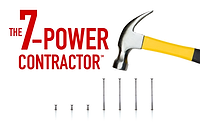
Back in the ’70s, I was attending engineering school. Please don’t hold that against me. I never got a chance to use my degree anyhow. But as part of that intense training, I had to write a lot of reports and term papers.
I don’t know about you, but English was like a foreign language when it came to correct spelling and use of grammar. The only saving grace was that my girlfriend at the time (and now wife of 30 years) was a great writer, so she could clean up the mess of a writing job I would do.
That was no easy task for her since it was long before computers sat on every desk. I dare say she used a “typewriter” and “white out.” Go try and find these two items in a big box office store today.
Doing sales at my family business, I had to do a lot of hand-written proposals when I first started. And when I wrote them by hand, it revealed to my customers just how bad my writing skills were.
The good news is that the computer age arrived just in time to allow me to move all my proposals into a word-processing program, and that’s when I began to type all my price quotes.
Back then, I won a lot of jobs just because my proposals looked very professional compared to my competitors’ hand-written chicken scratches. But I knew that another reason I won a lot of these bids was my proposals actually had words spelled correctly and grammar that was at least passable if not spectacular.
The truth is, my customers, just like yours, judged my professionalism and my intelligence by the words I wrote.
Tips For Good Writing
Today, I’m a much better writer than I was in college.One of the reasons I’m better is that I listened to Dan Holohan’s sage advice years ago, “If you want to become a better writer, you have to write.” And that’s also when I read the book he gave me called “The Elements of Style” by William Strunk Jr.
What amazes my wife, who still edits my writing, is that my spelling and grammar continue to get better. And that’s because when I type something wrong today, it instantly appears with a red line under it, and that immediately causes me to stop and check the autocorrect feature. This type of immediate feedback causes me to pay attention to the common errors I made and it helps me avoid making a lot of the same dumb spelling and grammar errors again and again.
It also was very helpful that as part of my Dale Carnegie® training I had to practice my writing skills to become a better communicator.
Finally, I followed another piece of Dan’s advice. But I admit, I hated it most of all. “If you want to write even better than you do today,” Dan told me, “you need to become an avid reader.”
And, of course, he was right again. Because the more I read, the more I paid attention to what good writing should look like.
Now, there are many different types of writing and writing skill levels. My goal is to make my writing sound like we’re having a conversation when you read it. I write these columns for PM and create operations manuals or workbooks for my workshops with this goal in mind.
That’s a horse of another color compared to the writing you’d do for a proposal. That’s more like Sergeant Friday’s style of “Dragnet” fame: “Just the facts, ma’am.”
When I write a brochure, I write it in a certain style that’s a lot more in keeping with what you’d read in a well-written direct mail piece. I improved this type of writing, more centered on sales and marketing, when I began to copy how I’d speak during a sales call.
That’s because I had learned a neat technique from a lecture on training I attended years back that stressed, “Don’t give out the information until you’ve created the need to know.”
This made a big change in how I teach, how I write and now how I train others to do this type of work.
So, how do you create the need to know?
I just did! It happened when I asked you a question that you will want answered. The other way is to tell a story so compelling that the person reading it will identify with its message on what they should or shouldn’t do.
My last tip to get you started toward better writing is to get yourself a good editor to read what you write. Explain to him or her what you’re trying to accomplish with each piece you’re writing, such as a sales brochure, a letter to your customers or a note to your banker.
Don’t get offended by all the red ink. Instead, ask why he made the corrections and suggestions he did and what you need to do to improve your writing going forward.
Do all of this and you’ll have the Write Stuff, too.


